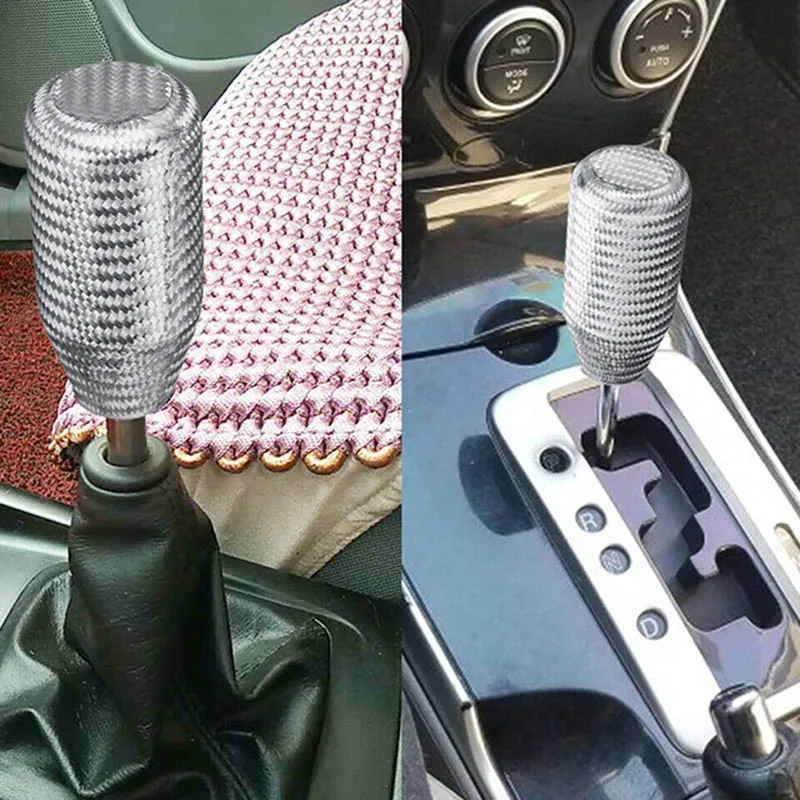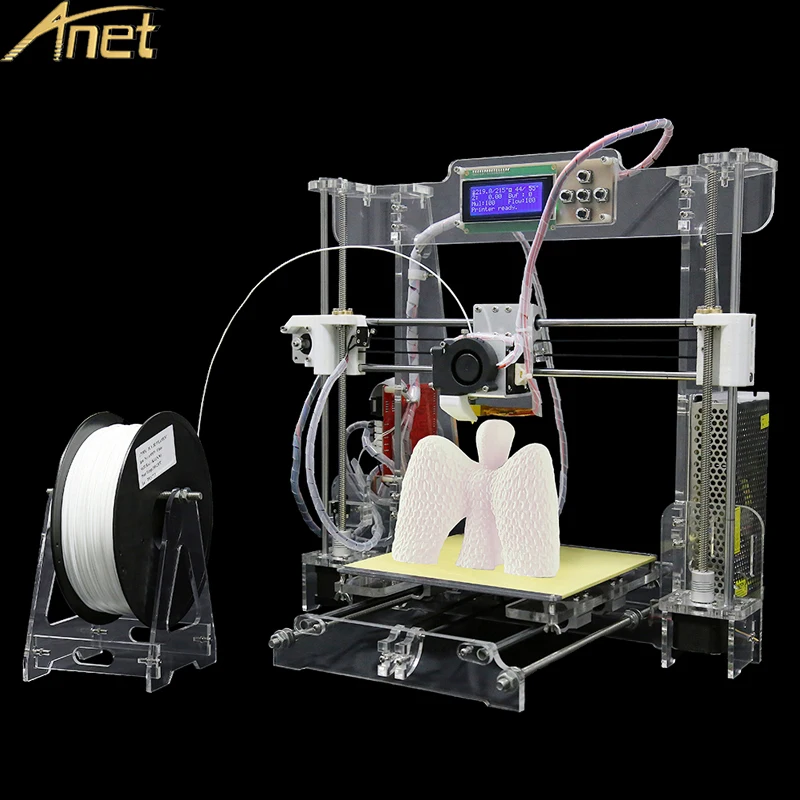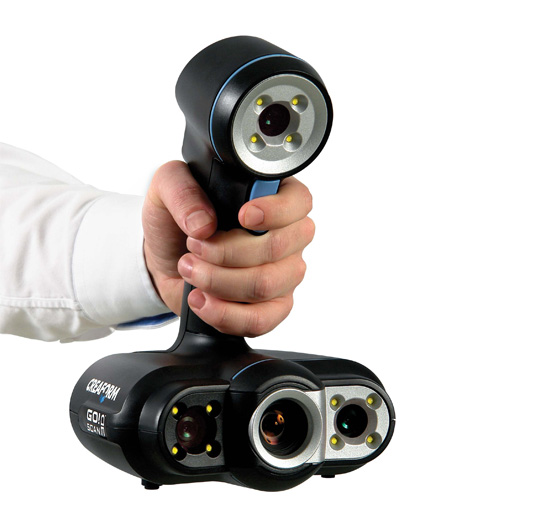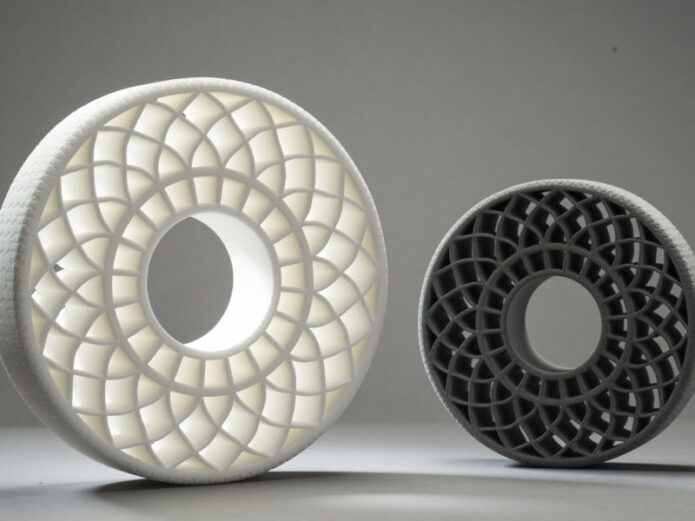Shining 3d dental scanner
Dental Scanner, Intraoral 3D Scanner, Professional Dental 3D Solution
Get a quote
Thank you for your interest in SHINING 3D! Please fill out the form below. We will contact you shortly.
AfghanistanALAND ISLANDSAlbaniaAlgeriaAmerican SamoaAndorraAngolaAnguillaAntigua And BarbudaArgentinaArmeniaArubaAustraliaAustriaAzerbaijanBahamasBahrainBangladeshBarbadosBelarusBelgiumBelizeBeninBermudaBhutanBolivia, Plurinational State OfBosnia And HerzegovinaBotswanaBouvet IslandBrazilBritish Indian Ocean TerritoryBrunei DarussalamBulgariaBurkina FasoBurundiCambodiaCameroonCanadaCape VerdeCayman IslandsCentral African RepublicChadChileChinaChristmas IslandCocos (Keeling) IslandsColombiaComorosCongoCook IslandsCosta RicaC?te D'IvoireCroatiaCubaCyprusCzech RepublicDenmarkDjiboutiDominicaDominican RepublicEcuadorEgyptEl SalvadorEquatorial GuineaEritreaEstoniaEthiopiaFalkland Islands (Malvinas)Faroe IslandsFijiFinlandFranceFrench GuianaFrench PolynesiaFrench Southern TerritoriesGabonGambiaGeorgiaGermanyGhanaGibraltarGreeceGreenlandGrenadaGuadeloupeGuamGuatemalaGuernseyGuineaGuinea-BissauGuyanaHaitiHeard Island And Mcdonald IslandsHoly See (Vatican City State)HondurasHong KongHungaryIcelandIndiaIndonesiaIran, Islamic Republic OfIraqIrelandIsle Of ManIsraelItalyJamaicaJapanJordanKazakhstanKenyaKiribatiKorea, Republic OfKosovoKuwaitKyrgyzstanLao People'S Democratic RepublicLatviaLebanonLesothoLiberiaLibyan Arab JamahiriyaLiechtensteinLithuaniaLuxembourgMacaoMadagascarMalawiMalaysiaMaldivesMaliMaltaMarshall IslandsMartiniqueMauritaniaMauritiusMayotteMexicoMicronesia, Federated States OfMoldova, Republic OfMonacoMongoliaMontenegroMontserratMoroccoMozambiqueMyanmarNamibiaNauruNepalNetherlandsNetherlands AntillesNew CaledoniaNew ZealandNicaraguaNigerNigeriaNiueNorfolk IslandNorthern Mariana IslandsNorwayNORTH KOREAOmanPakistanPalauPalestinian Territory, OccupiedPanamaPapua New GuineaParaguayPeruPhilippinesPitcairnPolandPortugalPuerto RicoQatarReunionRomaniaRussian FederationRwandaSaint BarthélemySaint HelenaSaint Kitts And NevisSaint LuciaSaint MartinSaint Pierre And MiquelonSaint Vincent And The GrenadinesSamoaSan MarinoSao Tome And PrincipeSaudi ArabiaSenegalSerbiaSeychellesSierra LeoneSingaporeSlovakiaSloveniaSolomon IslandsSomaliaSouth AfricaSpainSri LankaSudanSurinameSvalbard And Jan MayenSwazilandSwedenSwitzerlandSyrian Arab RepublicTaiwan, Province Of ChinaTajikistanTanzania, United Republic OftestThailandTimor-LesteTogoTokelauTongaTrinidad And TobagoTunisiaTurkeyTurkmenistanTurks And Caicos IslandsTuvaluUgandaUkraineUnited Arab EmiratesUnited KingdomUnited StatesUruguayUzbekistanVanuatuVenezuela, Bolivarian Republic OfViet NamVirgin Islands, BritishVirgin Islands, U. S.Wallis And FutunaWestern SaharaYemenZambiaZimbabweMACEDONIASOUTH GEORGIADemocratic Republic of the Congo
* Which product are you interested in?Industrial Grade Handheld 3D Laser ScannerHigh-Precision 3D Inspection ScannerPortable Wireless Optical CMM SystemPhotogrammetryMultifunctional Handheld 3D ScannerDesktop 3D ScannerIntraoral 3D ScannerLab 3D ScannerDental CAD SolutionDental 3D PrinterDesktop 3D PrinterPortable Shoe ScannerStable Shoe ScannerOther
submit...
Dental Scanners, CAD Software & Dental 3D Printers丨SHINING3D Dental
Get a quote
Please fill this form to receive a free quote within 24 hours (during working days).
AfghanistanALAND ISLANDSAlbaniaAlgeriaAmerican SamoaAndorraAngolaAnguillaAntigua And BarbudaArgentinaArmeniaArubaAustraliaAustriaAzerbaijanBahamasBahrainBangladeshBarbadosBelarusBelgiumBelizeBeninBermudaBhutanBolivia, Plurinational State OfBosnia And HerzegovinaBotswanaBouvet IslandBrazilBritish Indian Ocean TerritoryBrunei DarussalamBulgariaBurkina FasoBurundiCambodiaCameroonCanadaCape VerdeCayman IslandsCentral African RepublicChadChileChinaChristmas IslandCocos (Keeling) IslandsColombiaComorosCongoCook IslandsCosta RicaC?te D'IvoireCroatiaCubaCyprusCzech RepublicDenmarkDjiboutiDominicaDominican RepublicEcuadorEgyptEl SalvadorEquatorial GuineaEritreaEstoniaEthiopiaFalkland Islands (Malvinas)Faroe IslandsFijiFinlandFranceFrench GuianaFrench PolynesiaFrench Southern TerritoriesGabonGambiaGeorgiaGermanyGhanaGibraltarGreeceGreenlandGrenadaGuadeloupeGuamGuatemalaGuernseyGuineaGuinea-BissauGuyanaHaitiHeard Island And Mcdonald IslandsHoly See (Vatican City State)HondurasHong KongHungaryIcelandIndiaIndonesiaIran, Islamic Republic OfIraqIrelandIsle Of ManIsraelItalyJamaicaJapanJordanKazakhstanKenyaKiribatiKorea, Republic OfKosovoKuwaitKyrgyzstanLao People'S Democratic RepublicLatviaLebanonLesothoLiberiaLibyan Arab JamahiriyaLiechtensteinLithuaniaLuxembourgMacaoMadagascarMalawiMalaysiaMaldivesMaliMaltaMarshall IslandsMartiniqueMauritaniaMauritiusMayotteMexicoMicronesia, Federated States OfMoldova, Republic OfMonacoMongoliaMontenegroMontserratMoroccoMozambiqueMyanmarNamibiaNauruNepalNetherlandsNetherlands AntillesNew CaledoniaNew ZealandNicaraguaNigerNigeriaNiueNorfolk IslandNorthern Mariana IslandsNorwayNORTH KOREAOmanPakistanPalauPalestinian Territory, OccupiedPanamaPapua New GuineaParaguayPeruPhilippinesPitcairnPolandPortugalPuerto RicoQatarReunionRomaniaRussian FederationRwandaSaint BarthélemySaint HelenaSaint Kitts And NevisSaint LuciaSaint MartinSaint Pierre And MiquelonSaint Vincent And The GrenadinesSamoaSan MarinoSao Tome And PrincipeSaudi ArabiaSenegalSerbiaSeychellesSierra LeoneSingaporeSlovakiaSloveniaSolomon IslandsSomaliaSouth AfricaSpainSri LankaSudanSurinameSvalbard And Jan MayenSwazilandSwedenSwitzerlandSyrian Arab RepublicTaiwan, Province Of ChinaTajikistanTanzania, United Republic OftestThailandTimor-LesteTogoTokelauTongaTrinidad And TobagoTunisiaTurkeyTurkmenistanTurks And Caicos IslandsTuvaluUgandaUkraineUnited Arab EmiratesUnited KingdomUnited StatesUruguayUzbekistanVanuatuVenezuela, Bolivarian Republic OfViet NamVirgin Islands, BritishVirgin Islands, U. S.Wallis And FutunaWestern SaharaYemenZambiaZimbabweMACEDONIASOUTH GEORGIADemocratic Republic of the Congo
S.Wallis And FutunaWestern SaharaYemenZambiaZimbabweMACEDONIASOUTH GEORGIADemocratic Republic of the Congo
* Intraoral Scanner* Lab Scanner* CAD Software* Resin Printer* Other
submit...
Overview:
Intraoral 3D ScannersTraditional methods of diagnosing and modeling teeth are giving way to new ones based on 3D scanning and 3D printing. Learn about what 3D dental scanning is, how it is performed, and what benefits it has for clinicians and patients by reading this article.
Introduction
Source: blog.itero.com
3D dental imaging is gradually becoming the new standard of care in dental practice. 3D dental scanning allows dentists to digitally reconstruct your teeth and skull bones in 3D. Dentists can interact with this 3D model and visualize hard-to-reach areas.
How it works
Source: theorthocosmos. com
com
Intraoral (intraoral) 3D scanners (IOS) are devices for creating digital impressions in dentistry. Like other optical 3D scanners, they project light onto the object being scanned, receive the reflected light signal, and transmit it to a computer to create a three-dimensional image. An intraoral or intraoral scanner is often the most convenient solution for both the dentist and the patient.
Images of dental tissues (as well as implants) taken by image sensors are processed by special software that generates point clouds. These point clouds are processed by the scanner software to produce a 3D surface model. As a result, the dentist receives a digital model that is more comfortable to work with than traditional plaster models. Based on this model, if desired and if necessary, you can print on a 3D printer and a physical copy.
Intraoral 3D scanners
Source: c4d.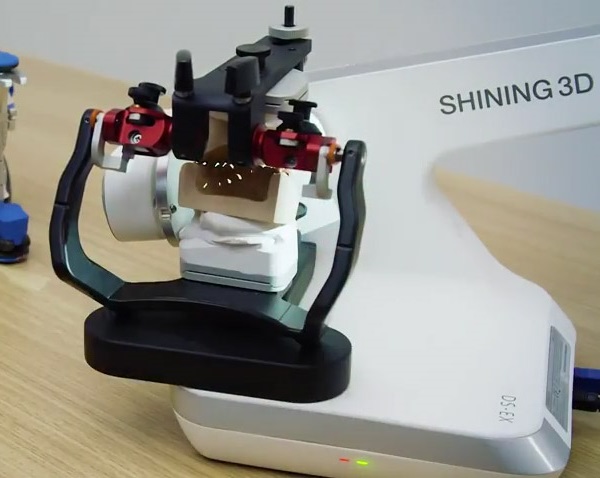 solutions/products
solutions/products
in prosthetics, surgery and orthodontics.
Implant library models are superimposed on a 3D scanned image, and can be edited for maximum compatibility within minutes, then immediately sent to production.
These models can be useful for impressions of natural teeth in a wide range of prosthetic restorations: resin inlays/onlays, zirconium, lithium disilicate or zirconia single-ceramic and all-ceramic crowns, as well as bridges and fixed dentures.
Studies show that the marginal clearance of ceramic single crowns obtained by intraoral scanning is more accurate than that of conventional impression crowns. This digital technology can also be applied to other dental applications, such as replacing obsolete veneers with all-ceramics.
Source: all3dp.com
I would like to note that intraoral 3D scanning, although it is a technological breakthrough in the field of dentistry, has its own natural physical limitations in use. IOS is most effective when used in conjunction with other 3D diagnostic imaging modalities such as CBCT (cone beam computed tomography) and laboratory 3D scanners.
IOS is most effective when used in conjunction with other 3D diagnostic imaging modalities such as CBCT (cone beam computed tomography) and laboratory 3D scanners.
Source: all3dp.com
By combining these technologies, a series of images obtained using different techniques are stitched into a single three-dimensional model, which allows you to make an object that is ideal for the patient.
Source: carestreamdental.com
The main advantage of intraoral 3D scanners is the ability to directly obtain a full 3D model of the patient’s physical arches. The traditional procedure for taking physical impressions causes short-term discomfort to the patient due to the materials placed in the oral cavity on the impression trays. Some patients (for example, patients with a strong gag reflex or children) do not tolerate the classic procedure - 3D scanning is much preferable for them, although it takes a little longer than biting on the plastic mass.
Some patients (for example, patients with a strong gag reflex or children) do not tolerate the classic procedure - 3D scanning is much preferable for them, although it takes a little longer than biting on the plastic mass.
Source: dreamstime.com
Recent technological advances in IOS allow a full arc scan to be completed in less than 2-3 minutes, significantly less than the time it takes to create a plaster cast from an impression. In addition, 3D patient models can be sent electronically directly to a crown or prosthesis lab without the need to send anything by courier or regular mail. 3D scanned files can be directly imported into CAD and CAD software.
Source: jkdentalgroup.myshopify.com
Another advantage of intraoral 3D scanners is the simplification of fitting in difficult cases, such as multiple implants or severe damage. If the doctor is not satisfied with some details of the optical impression, he can remove or change them without having to repeat the entire procedure.
If the doctor is not satisfied with some details of the optical impression, he can remove or change them without having to repeat the entire procedure.
Source: www.pinterest.ru
With IOS, the doctor and the dental technician can evaluate the quality of the print in real time. In fact, immediately after the scan has been performed, the dentist can email the result to the lab for a technician to evaluate it. If the dental technician is not sure about the quality of the obtained optical impression, he can immediately ask the doctor to perform another scan. This greatly simplifies and speeds up the interaction between the dentist and the dental technician.
Source: eudent.ro
Intraoral 3D scanning is a great tool to improve doctor-patient communication. In the process of making optical impressions, patients feel more involved in the treatment and more effective communication can be established with them.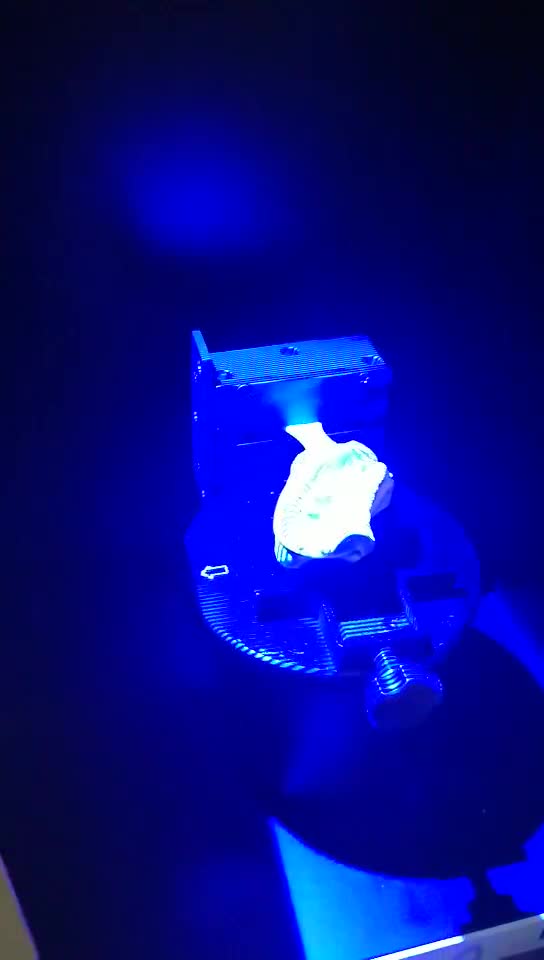 This emotional involvement can have a positive impact on overall care, for example by improving patient compliance with oral hygiene. In addition, this is a powerful marketing tool - patients are interested in this technology and tell their friends and acquaintances about it, increasing attention to dental centers equipped with these modern devices.
This emotional involvement can have a positive impact on overall care, for example by improving patient compliance with oral hygiene. In addition, this is a powerful marketing tool - patients are interested in this technology and tell their friends and acquaintances about it, increasing attention to dental centers equipped with these modern devices.
Source: qsttech.com
exact line. Unlike conventional impression materials, light cannot physically separate the gum and therefore cannot scan "invisible" areas. Similar problems can arise in the event of bleeding, as the blood can obscure the edges of the prosthesis.
Despite this, with due care, appropriate measures for preparation, line selection and prevention of bleeding, the doctor can make a good optical impression even under difficult conditions.
Source: www.youtube.com
When considering models of intraoral 3D scanners, it is also worth paying attention to the use of "closed" systems that produce results only in a proprietary file format.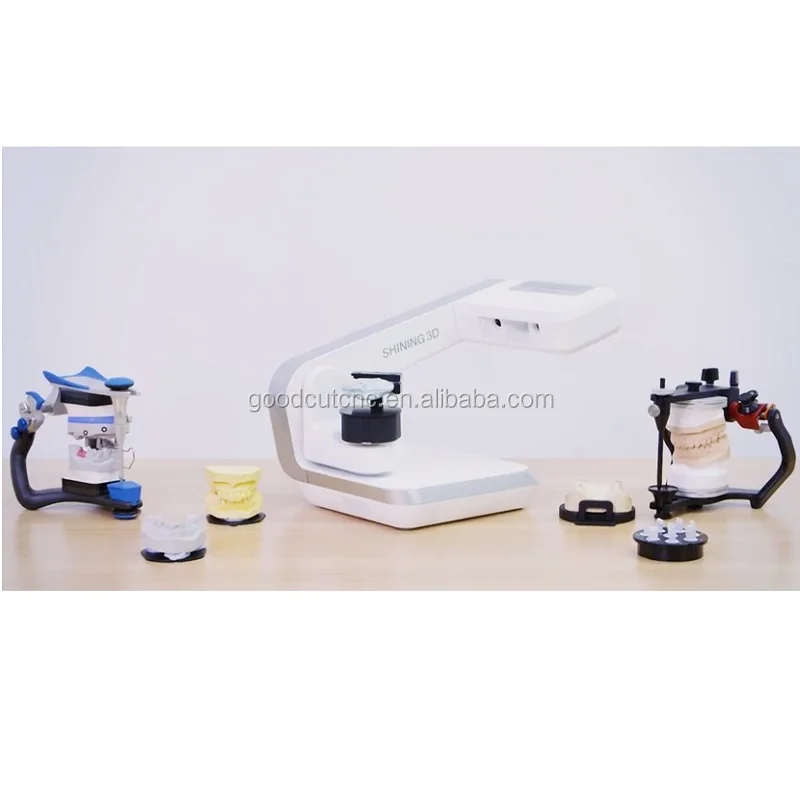 Although this is already rare enough, some hardware manufacturers may still require an annual or monthly fee to "unlock" files for use in any software or any laboratory.
Although this is already rare enough, some hardware manufacturers may still require an annual or monthly fee to "unlock" files for use in any software or any laboratory.
Manufacturers and innovations
Source: instituteofdigitaldentistry.com
The International Dental Exhibition (IDS), held in March 2019 in Cologne, Germany, showed a huge amount of new equipment and software for digital dentistry. This is the largest dental show in the world, where the world's leading equipment manufacturers present their latest achievements. The exhibition is held once every two years, starting from 1923.
During IDS 2019, it became clear how quickly dentistry is changing. CAD/CAM is developing rapidly, the market is constantly growing number of 3D printers, milling machines, materials and, of course, intraoral scanners.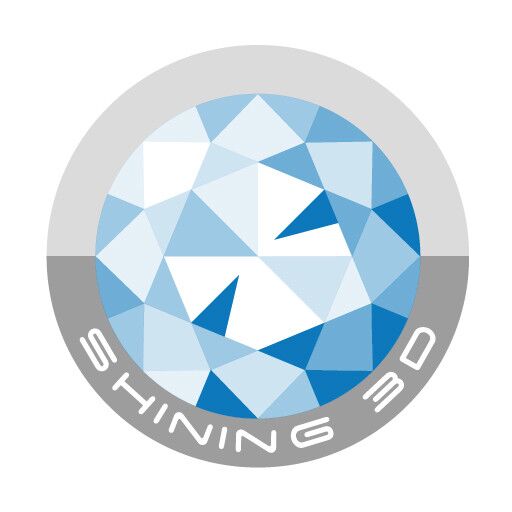 One cannot but rejoice at the fact that almost all modern models have the ability to export scan results to third-party applications in STL, OBJ or PLY formats.
One cannot but rejoice at the fact that almost all modern models have the ability to export scan results to third-party applications in STL, OBJ or PLY formats.
Source: english.ids-cologne.de
The scanners presented at the exhibition were tested on a set of typodont models, with a full arch scan and a bite scan, the results were compared.
Each scanner was evaluated according to the following criteria:
- Scanning speed (Speed):
most modern scanners can complete a full color scan of the entire arc within one minute;
- scan quality (Flow):
shows the quality of capturing the surface and shape during scanning, the continuity of the scan, the speed of recognizing the stop after resuming the interrupted work, as well as the quality of the stitching of the scan and the resulting file itself;
- scanner size (Size):
is based not only on the size of the head, but also on the overall size and weight of the scanner;
- Ease of Use (Ease):
measures hardware convenience, scanning smoothness, software, imaging, and workflow capabilities;
- price / investment cost (Price):
relative to the cheapest and most expensive models in the review;
- availability of paid service (Subs):
Availability of paid or free software update, maintenance, technical support services;
- touch screen (Touch):
controls on the scanner itself;
- wireless scanner (Wireless):
the ability to work wirelessly, usually with a Bluetooth or Wi-Fi connection;
- detection of caries (Caries):
the presence of a caries detection function, for example - transillumination or fluorescence;
- integration with CAD (CAD):
availability of CAD functions in the software.
Source: instituteofdigitaldentistry.com
Application overview
Medit i500 at SmileOnPerth (Wembley, Australia)
Source: smileonperth.com.au/
Drs Sean and Lara Slotar have created more smiles than anyone else in Australia - more than 1200 smiles since 2008, after more before they opened the SmileOn Perth - Your GlamSmile center, already having thirty years of experience in dentistry at that time.
Source: biometricdental.com
Sean and Lara love to change people's lives, to see how confidence comes with a change in appearance and beaming smiles appear on people's faces. Thanks to the Medit i500 intraoral scanner, Sean and Lara can create perfect new teeth without damaging healthy ones.
Source: smileonperth.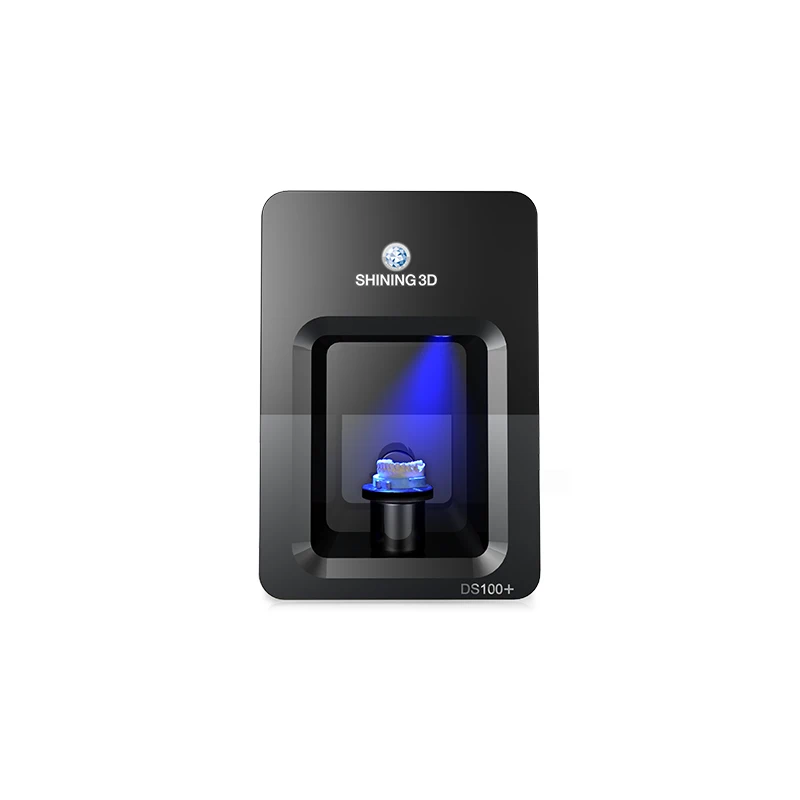 com.au
com.au
Dr. Sean Slotar: New technologies in dentistry are great! No more cumbersome, messy, agonizing, patient-nauseating procedure. Your images, taken in a couple of minutes with the Medit i500 intraoral scanner, are sent to a state-of-the-art overseas laboratory via the Internet, which means turning our customers into smiling people quickly and easily!”
Source: shining3ddental.com
Dr. Cheng Qingshen, Chief Physician of the Implantology Department of Hangzhou Dental Hospital (Chengxi Branch), consulted a 51-year-old female patient with implant complaints in place of one of the molars. For intraoral scanning, a Shining Aoralscan 3D scanner was used. The scanning procedure took about 7 minutes.
Source: shining3ddental.com
According to the data obtained, a digital model of the new crown was developed and sent to the laboratory for fabrication. The manufacturing process took about 20 minutes.
Source: shining3ddental.com
Dr. Chen commented on this case:
“Aoralscan is accurate, fast and efficient. With its help, the dentist can obtain comprehensive information about the state of the patient's oral cavity. Restoration of implants can be performed using proprietary design software and a CNC milling machine. Digital technologies reduce the time of work with the patient and improve their perception of medical manipulations. I am sure that we will constantly use this scanner in our work.”
Dr. Camille Trolle, 3Shape Trios 3 3D Scanner, Tandlægerne Hørsholm Clinic
Source: hovedgaden33. dk
dk
Dentist Camille Trolle is an experienced dentist who has been using the TRIOS 3D intraoral scanner in her practice for many years. In addition, in partnership with 3Shape, she conducts seminars and training courses on the use of modern digital technologies in dentistry.
Source: youtu.be
Dr. Trolle says:
“With 3Shape TRIOS 3 digital technology, the dentist has many new possibilities. Efficiency increases, accuracy increases and the risk of manual errors is minimized. Digital processing greatly simplifies treatment and ensures simple and accurate communication between the dental clinic and the laboratory. In addition, the treatment process becomes fast, elegant and painless, minimizing the time the patient spends in the chair.”
Recommended equipment models
Medit i500
Features
- Weight, gr:287Dimensions, mm:267
- Country of origin: Korea Scan area: 14 x 13 mm
- Light source: LED Accuracy ±, µm: 2
- Specialization:DentistryScanning accuracy, µm: 4.
 2±0.49
2±0.49 - Color scanning: yes Price: On request
Description
The Medit i500 is a new high-precision intraoral scanner primarily aimed at dental technicians and orthodontists.
When designing the scanner, manufacturers focused on high cost-effectiveness of its use, so the design and software allow you to get high performance at a good price. The Medit i500 uses an open CAD/CAM system, allowing STL files to be exported from Medit Link and transferred or shared to external labs.
The scanner is equipped with two high-speed cameras, so it scans quickly. The smoothness of scanning is ensured by an intelligent scanning algorithm. Scanning does not require the application of optical powders to the teeth. The tip of the Medit i500 is small and will not cause discomfort to the patient.
Medit i500 creates realistic images with good resolution and high detail. The scanner uses video capture, so it receives a large amount of data from two cameras in a short time. Supports color scanning without loss of accuracy.
The scanner uses video capture, so it receives a large amount of data from two cameras in a short time. Supports color scanning without loss of accuracy.
The scanner itself is handy and lightweight, making it comfortable to carry out even long scans. It is controlled by the button to start and stop scanning.
The scanner comes with user-friendly and easy-to-learn software. The software has all the necessary functions, such as analysis of undercut areas, automatic occlusion detection and analysis, protection of scanned data from overwriting, as well as receiving and processing video from cameras.
3Shape TRIOS 3
Source: pinterest.ru
The 3Shape TRIOS 3 dental 3D scanner gives the dental office the opportunity to significantly reduce patient service time, increase their satisfaction with the services provided and facilitate the work of the doctor.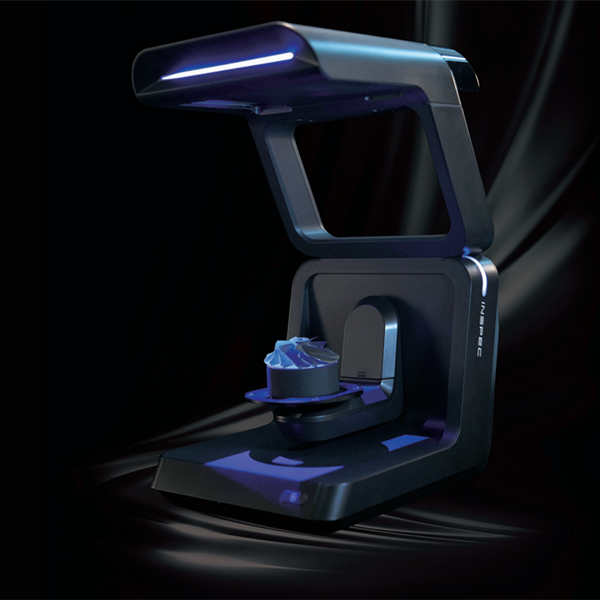 The streamlined shape of the scanner eliminates discomfort or injury to patients. TRIOS provides continuous software updates and a range of powerful applications to expand the range of services for which it can be used.
The streamlined shape of the scanner eliminates discomfort or injury to patients. TRIOS provides continuous software updates and a range of powerful applications to expand the range of services for which it can be used.
Features
- Weight, g: 373 Dimensions, mm: 42 x 274 x 120
- File formats: DCM, STL Interface: USB
- Light source:LEDSoftware:TRIOS®
- Scanning accuracy, µm: 4.5 ± 0.9 µm Color scanning: no (Trios 3 Basic), yes (Trios 3)
- Price: On request
Description
Source: medicalexpo.com
3Shape TRIOS 3 Intraoral 3D Dental Scanner connects to a computer via Wi-Fi or via a wired connection (Basic model). TRIOS 3 is equipped with a removable sterilizable handpiece. The charging station can accommodate three batteries at the same time, which eliminates the loss of working time. The ergonomic scanner is available in two versions - in the form of a pen or with an additional pen.
The ergonomic scanner is available in two versions - in the form of a pen or with an additional pen.
3Shape TRIOS 4
Source: behance.net
This is the fourth generation of TRIOS scanners, retaining all the strengths of TRIOS 3, one of the fastest dental 3D scanners on the market. The TRIOS 4 Intraoral Scanner has the same speed as the 3Shape TRIOS 3 (a full arch scan is completed within 25 seconds), but has a more ergonomic and stylish design, enhanced functionality, and some hardware and software improvements.
Features
- Weight, g375 Dimensions, mm: 42 x 274 x 120
- File formats: DCM, STL Interface: USB
- Light source:LEDSoftware:TRIOS®
- Scanning accuracy, µm: 4.5 ± 0.9 µm Color scanning: yes
- Price: On request
Description
Source: behance. net
net
Superficial caries detection has been added using proprietary fluorescent dual scan technology, the results of which are superimposed on a digital model in the form of a color map with marks of possible tooth damage. The optional scanning tip allows screening between proximal surfaces using transillumination.
The TRIOS scanner tip has been replaced with new Smart Tips that allow you to scan immediately without waiting for the scanner to warm up and have a useful autoclaving counter feature. Increased maximum cycles before replacement is now 150. Wireless model battery life increased by 30%. The TRIOS software has been greatly improved and now includes features such as Clear Aligners, Dentures, Sleep equipment, and more.
Shining Aoralscan
Source: 3dprintingindustry.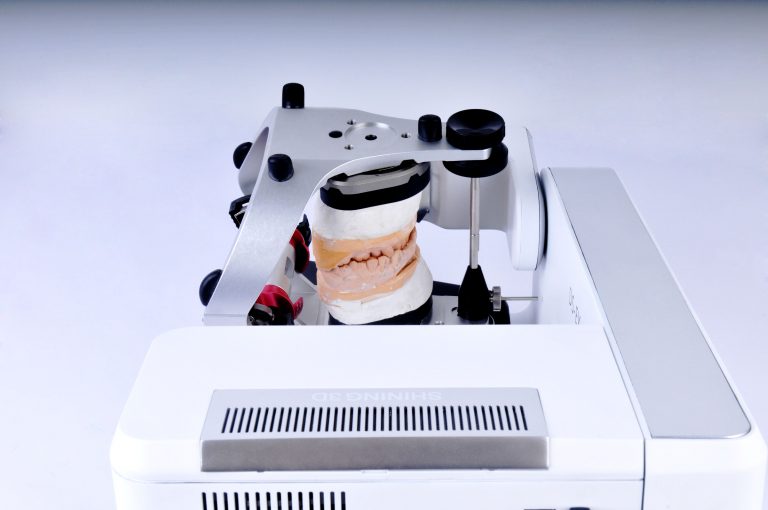 com
com
The SHINING 3D Aoralscan intraoral scanner allows dentists and orthodontists to obtain high-quality digital images that are used later for treatment, implantation and restoration of teeth. The device does not require additional training for specialists to use it, and the intelligent software is intuitive. Replaceable sterilizable tips eliminate the risk of patient contamination.
Features
- Interface: USB 3.0 Ambient temperature: 10°C to 40°C
- Operating systems: Windows 10 64bit Scanning speed: 15 fps
- Data output format: STL, OBJ Color scanning: Yes
- PC configuration requirements: Processor: I7-7700 or higher; RAM: 16 GB or more; Graphics Card: NVIDIA GeForce GTX 1060 6 GB DDR or higher Price: On request
Description
Source: 3printr.com
After a quick and painless 3D scan for the patient, the doctor receives a digital image of the oral cavity with realistic color and clear lines.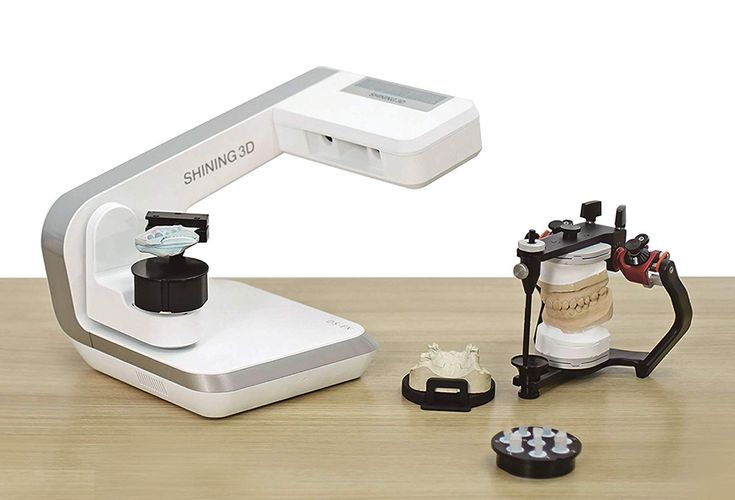 The scanning process can be interrupted if necessary, and then resumed from where it left off. The software allows you to explore changes in the oral cavity in dynamics, according to previous images. The use of cloud infrastructure enables remote storage and use of scan results by other specialists, for example, in a dental laboratory.
The scanning process can be interrupted if necessary, and then resumed from where it left off. The software allows you to explore changes in the oral cavity in dynamics, according to previous images. The use of cloud infrastructure enables remote storage and use of scan results by other specialists, for example, in a dental laboratory.
Conclusion
Source: all3dp.com
There are still dentists who use the old technology to create impressions, and sometimes it is justified to instantly take an impression and then scan it with a desktop 3D dental scanner. But more and more specialists prefer intraoral scanning - it is more hygienic, does not require consumables (mass for impression), gives accurate results, and the speed of such scanners grows as they develop.
Source
Tags:
global and Chinese dental 3D printing market
English
China: According to CONTEXT, 3D Science Valley's global market research partner, continued use of 3D printing for mass production remains key to accelerating growth, with dentistry one of the key growth-enhancing applications. 3D printing is already one of the most exciting trends in the dental industry this year.
What is the technology behind dental 3D printing and what are the developments of the major players in the field of dentistry?
Rapid technological evolution brings new opportunities
In terms of industrialization, especially in the field of dentistry, the development trend could not be more obvious in Mainland China.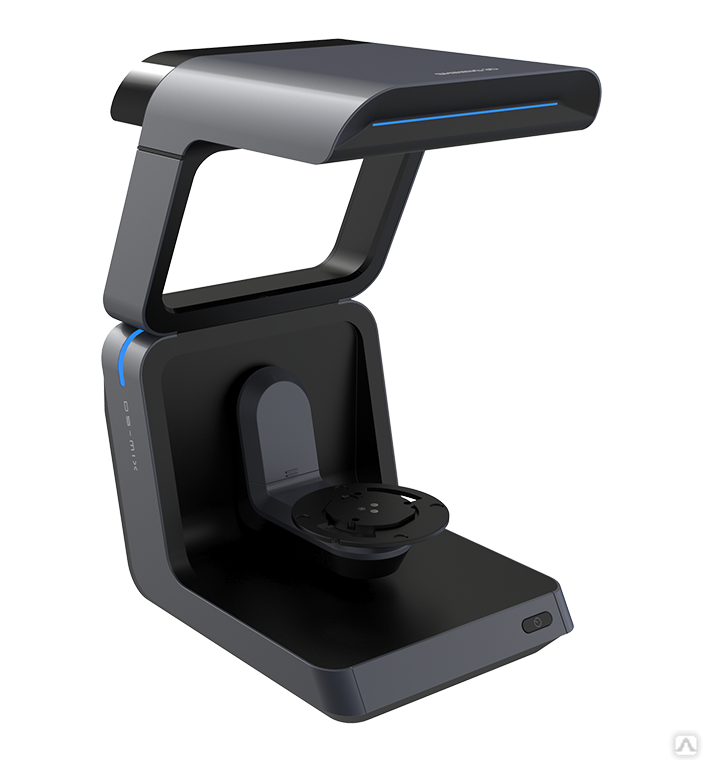
Digitalization has become the watchword for the development of China's dental industry. 3D printing technology is designed to integrate with digital redesign of oral diagnostics and treatment, denture restoration, and orthodontic processing.
The SLS Formlabs Fuse 1 desktop system directly converts oral scans into 3D printed dental models.2022 will be a milestone in dental 3D printing.
Prior to the COVID outbreak, dental clinics around the world were slowly adopting digital 3D printing technology. However, the pandemic has accelerated adoption, largely due to the benefits of instant data sharing with patients.
With continuous innovation in materials and software, affordable and easy-to-use 3D printing will soon become a highly valued digital asset in an industry that is rapidly moving towards full digitalization. Dental applications in 3D printing include plastic and metal 3D printing. The development of plastics is an example of the aforementioned rapid growth.
Take Formlabs, a new venture in the plastics 3D printing industry, for example. Since 2016, sales of Formlabs printers in the dental industry have grown by 460%.
In 2021, Formlabs validated its Fuse 1 Desktop SLS System for 3D printing of dental models, released a biocompatible dental resin, and announced a new feature in its PreForm software that will directly convert oral scans into 3D printed dental models .
own Shining 3D has launched a special division of the dental business, which supplies high-performance scanners for dental laboratories and orthodontic clinics, 3D printing equipment, and offers a variety of educational resources and dental services programs.
This year, Shining 3D successfully launched its Aoralscan 3 intraoral scanner and AngelAlign's iOrtho digital intelligent orthodontic platform. From oral scanning, rapid communication between doctors and patients, to program development and custom manufacturing, Shining 3D has charted the future of digital orthodontic treatment.
Elsewhere, Stratasys introduced its J5 DentaJet compact multi-component printer; Materialize has released a software module dedicated to the production of dental supplements; and SprintRay introduced dental resins and post-curing devices.
Interestingly, established industrial company Sandvik acquired a medical and dental 3D printing company, while Japanese manufacturer Roland DGA returned to 3D printing with a new dental 3D printer.
Another company, Graphy, has developed materials for direct 3D printing of aligners.
Fast Iterative Dental 3D Printing Technology
carbon offers a powerful orthodontic 3D printing solution with DLS technology, including various materials and L1 printers that dental labs can use to create crisp aligner models. In fact, Carbon has partnered with digital oral health platform Candid to create 3D printed models for clear aligners.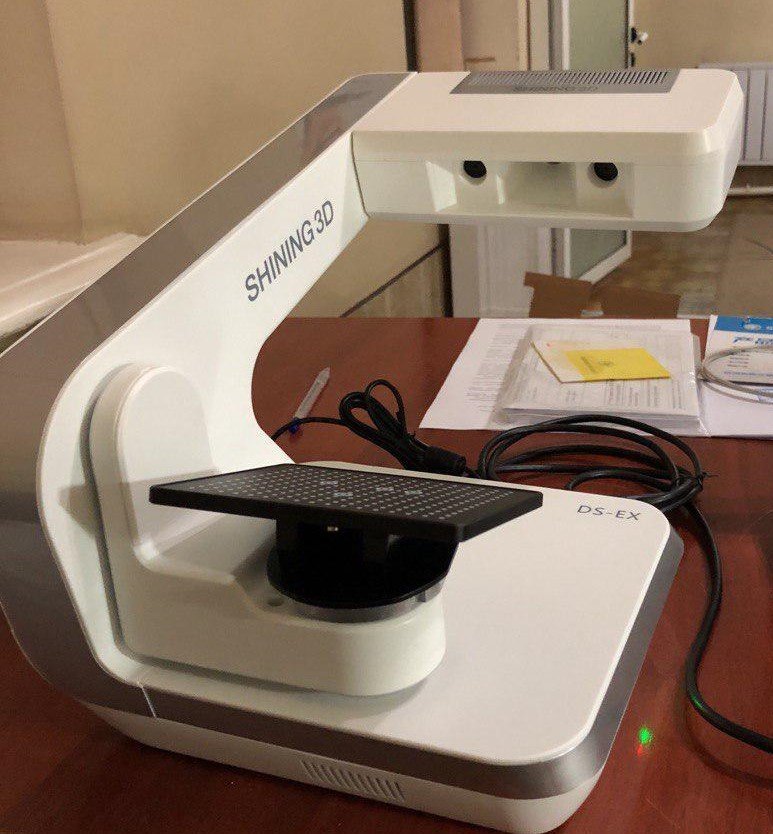
Light curing is a highly competitive industry with Nexa3D launching its NXD3 large format 200D printer for dental labs in 2021. Nexus3D has partnered with Keystone to advance dental applications through 3D printing and announced another partnership with software company Oqton to launch new dental software to address the need for 3D printing for patients. special dental appliances and aligners.
When it comes to using 3D printing for orthodontics, there is competition between different 3D printing technologies. Stratasys'
J5 DentaJet is a compact multi-material 3D printer.3D Science Valley notes that the introduction of HP 3D printing technology has reduced the cost of manufacturing invisible braces, and companies such as Smile Direct Club and European Impress continue to use 3D printing to push the boundaries of oral care and mass-produce personalized products. .
Ever since Invisalign by Align Technology pioneered research and development to replace traditional metal braces, rising stars have emerged one after the other.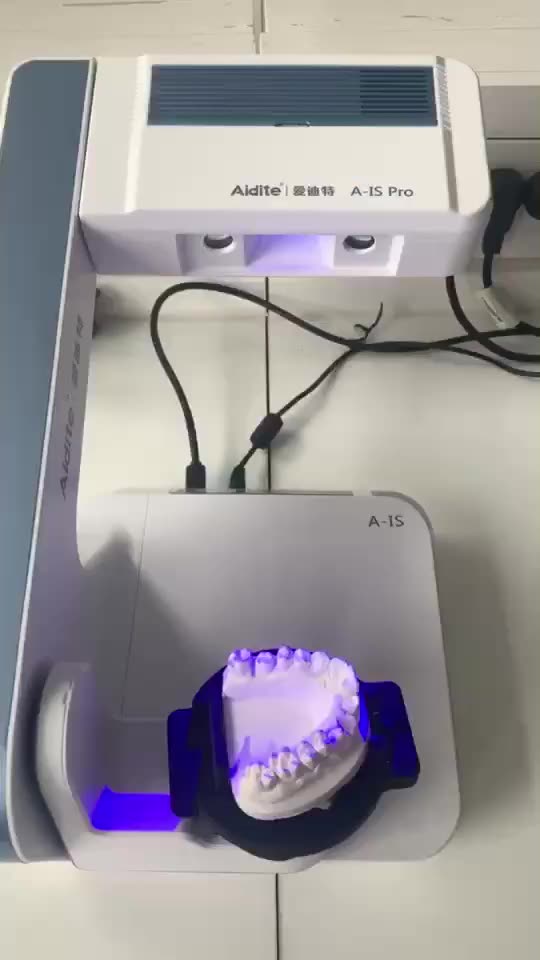
Smile Direct Club is one of Invisalign's main competitors. The company was founded in 2014 and posted $511 million in quarterly revenue for March 2021, up 8.28% year-over-year.
Smile Direct Club
Founded in 2019Smile Direct Club manufactures and sells dental braces that the company claims are 60% cheaper than other options.
Since its inception, Smile Direct Club has opened over 300 SmileShops, including partnerships with CVS and Walgreens.
Smile Direct Club claims their dental braces cost 60% less than other options.Smile Direct Club's differentiated market positioning is sustainable due to its ability to deliver efficiency and convenience, according to 3D Science Valley. Its 100% money back guarantee also stands out in the market – one treatment cycle is 24 months and the total cost is between 1950 to $2386, depending on your choice of packages.
In terms of cost control, in addition to efficiently producing molds for invisible mouthguards using HP 3D printing technology, Smile Direct Club also reduces the frequency of communication between doctors and patients. Its self-service scanning kits enable patients to conduct remote consultations and follow-ups from the comfort of their homes.
Its self-service scanning kits enable patients to conduct remote consultations and follow-ups from the comfort of their homes.
3D printed prostheses
Online data sharing also helps reduce the need for repeated trips to the hospital or clinic for doctor visits. Not only are orthodontic applications rapidly evolving, but 3D printing is gaining ground in dental prosthetics.
In 2022, Desktop Health, a subsidiary of Desktop Metal, launched a series of high-precision Einstein 3D printers designed for dentists, as well as FDA-approved dental products for permanent use, such as Flexcera Smile Ultra+ ceramic resin.
By combining 3D printers and materials, dentists can use the desired combination to provide individual patients with accurate 3D printed dental restorations for permanent and temporary dental restorations in a variety of applications.
Strategic thinking in dental 3D printing
Digitalization offers a comprehensive and stable development trend in the global dental and dental processing industries.





